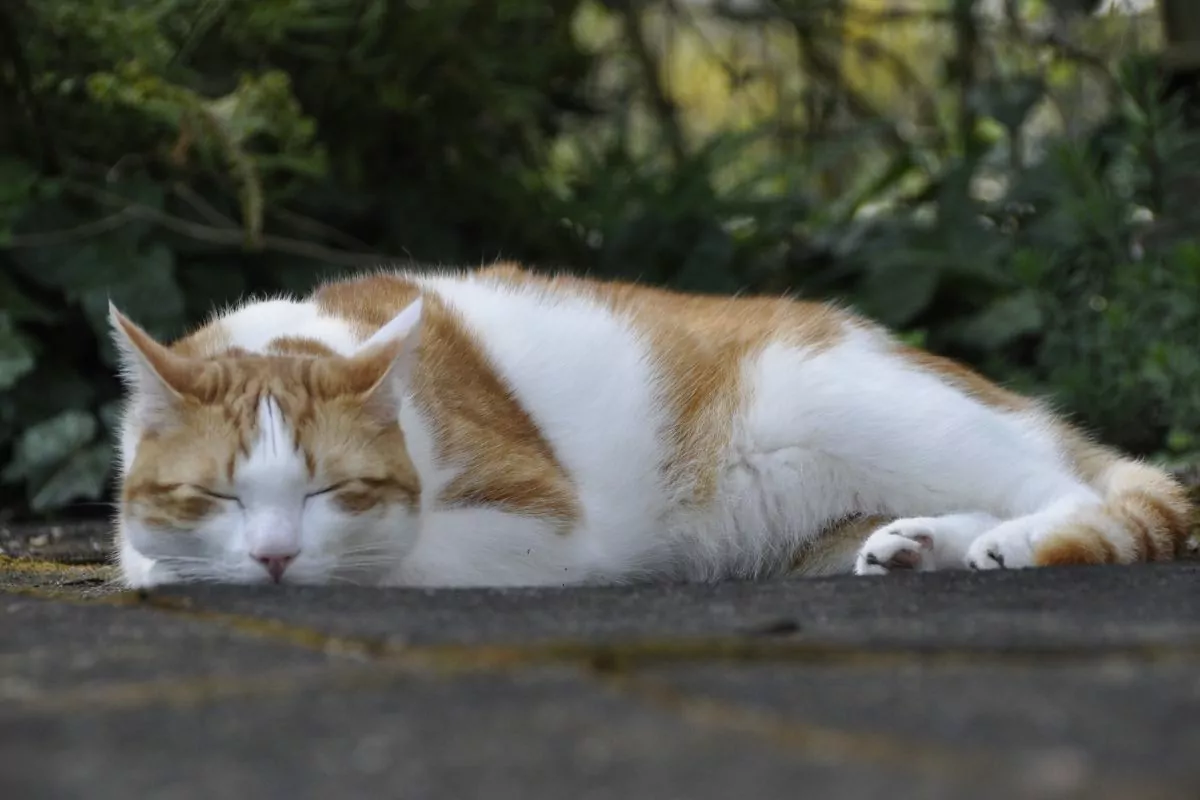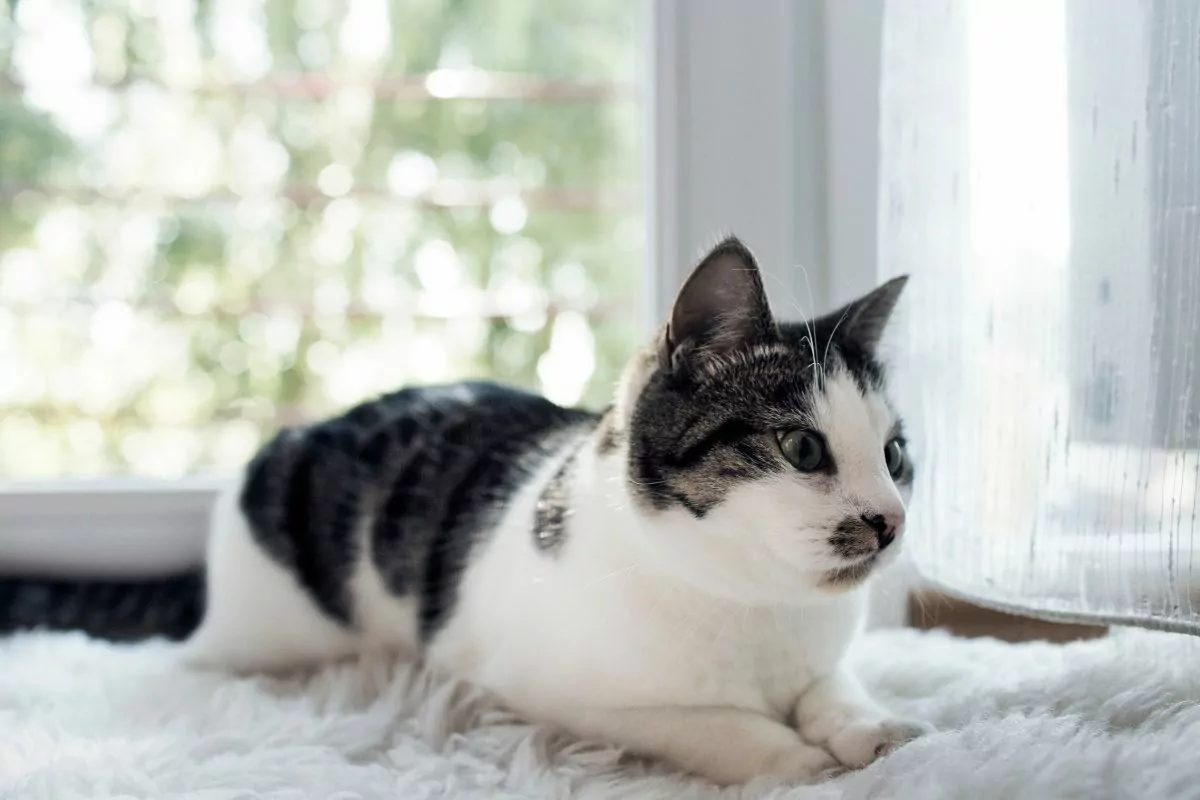Why is Feline Dehydration Such a Severe Issue?
Veterinarians take dehydration in cats seriously since your cat’s body needs water to perform nearly all bodily functions. If the fluids and electrolytes in the cat’s body are insufficient, organ systems can begin to shut down, waste builds in the bloodstream, and the situation can become dire.
Furthermore, dehydrated cats simply feel unwell and will not eat or drink normally, exacerbating the situation. Proper hydration is essential for your cat’s optimal health.

Signs and Symptoms of Dehydration in Cats
Signs of dehydration in cats include:
- Loss of energy
- Panting
- Refusal to eat
- Sunken eyes
- Tacky and dry gums
Skin tenting is a helpful test for determining your cat’s dehydration. To do this, gently pull up a tiny bit of your cat’s skin under its shoulders and let go. The skin will rapidly snap back into place if your cat’s hydration level is good.
However, your cat’s hydration levels may be low if the skin slowly falls back down. If your cat’s skin remains in a tent position and does not fall back down, this could indicate severe dehydration. In such instances, you should seek immediate medical attention for your cat.
What Causes Dehydration in Cats?
Cat dehydration is usually a result of your cat not drinking enough or losing too much water. Cats can also lose moisture by sweating small amounts via their paws, but this normally does not result in significant water loss. A variety of reasons can cause dehydration, including:
- Insufficient water intake: Cats that do not drink enough water risk becoming dehydrated. This may occur if their water bowl is empty, the water is stale, or they have no interest in consuming it.
- Illness: Dehydration in cats with kidney disease and other conditions like diabetes and hyperthyroidism is common. This might result from greater urination, less water consumption, or vomiting.
- Vomiting or diarrhea: When cats vomit or have diarrhea, they lose a lot of fluids and electrolytes. This leads to dehydration.
- Heatstroke: Cats are susceptible to developing this condition when exposed to hot, humid conditions. Excessive sweating and panting can result in dehydration.
- Excessive urination: Cats with underlying medical conditions such as kidney illness, which make them urinate more frequently, may get dehydrated.
Available Treatment Options
There are various dehydration-in-cats treatment options. A fast procedure your veterinarian can perform is injecting fluids under the cat’s skin. In severe circumstances, your veterinarian may advise hospitalizing your cat and administering fluids via an IV inserted directly into the cat’s vein.
This procedure will usually rehydrate your cat in hours or days. Your veterinarian will also determine the cause of your cat’s dehydration and assist you in nursing them back to health.
How Much Water Should Cats Drink?
Your cat requires approximately 3.5 to 4.5 ounces (103 to 133 milliliters) of water per five pounds (2.27 kilograms) of body weight daily. For example, a cat weighing 10 pounds ( 4.54 kilograms) should consume between seven and nine ounces (207 and 266 milliliters) of water daily.
If the cat frequently consumes wet food, you may observe that it drinks less water. This is because cats consume water while eating. Up to 80% of moist foods consist of water. Cats who predominantly consume dry food will not absorb as much water from their food. They need to drink from their water dish to stay hydrated.

Why Won’t My Cat Drink Water?
They Obtain Sufficient Hydration from Their Diet
Most cat foods meet a cat’s hydration needs, so they do not drink excessively. Fresh food promotes hydration by incorporating water into your cat’s diet, so if you recently switched to fresh food, their water consumption may increase.
Behavioral Quirks
Cats have distinct eating and drinking behaviors. In the wild, still, water sources are more likely to contain microbes, so many cats usually avoid them. They may also drink elsewhere, particularly if they discover a moving water source.
Additionally, your cat may be licking the bathtub or drinking from a dripping faucet. Also, they may be getting water from an outside source if they could access the vast outdoors.
Furthermore, changes to a cat’s daily routine, such as house guests, a transfer, or frequent travel, may result in a type of hunger or thirst strike. To assist, try slowing down transitions and maintaining a daily regimen.
Your cat may also consume less water in the presence of another feline companion. Providing multiple food and water containers throughout the home may reduce avoidance caused by conflict near the food and water bowls.
Health Issues
Due to the distress caused by dental infections, inflammation of the mouth, or gastrointestinal disease, cats may avoid drinking water. Cats with other health issues, such as kidney disease, hyperthyroidism, certain malignancies, and diabetes, are more likely to avoid taking water and thus suffer dehydration.
Also, extreme heat, vigorous activity, vomiting, and diarrhea can rapidly deplete a cat’s water reserves, so it is essential to understand what dehydration is and how it manifests in your pet.
How to Hydrate a Cat
The following are ways you can keep your cat hydrated:
Maintain a Clean, Fresh Water Bowl for Your Cat at all Times
Ensuring your cat always has fresh, clean water is one simple way to ensure they drink enough fluid. Cats often like fresh water, so don’t just add water to a bowl with a low level. Dump out the entire bowl, clean the muck from the bottom, and refill with new, chilled water.
When Providing Water, Be Creative
Cats are naturally curious. To keep your cat hydrated, take advantage of his interest by providing water in various sorts of containers and multiple locations throughout your home. Some cats enjoy it when you unconventionally present water.
Another strategy for certain cats is putting a bowl of water in a different location, like a corner of the living room or the bedroom; this may pique a cat’s interest and get them to drink.
By providing water in various containers or different areas, you achieve two key tasks simultaneously: encouraging your cat to drink enough water to stay healthy and creating an enriched environment that all cats require to remain happy and healthy.
Invest in Pet Water Fountains
Pet water fountains are an excellent choice for cats who enjoy the sound of running water. Many cats enjoy flowing water, so a fountain-type water bowl can encourage more drinking. Many pet water fountains include filters to help your cat drink the cleanest, freshest water possible. You must clean pet water fountains, like bowls, regularly.
Broth Can Be Your Cat’s Best Friend
Adding a small amount of low-sodium, low-fat broth (beef or chicken) to your cat’s water bowl can encourage your cat to drink more water. If your cat likes cold water or ice cubes, freeze some of the diluted broth in an ice cube tray. Add a cube or two into your cat’s water bowl whenever you change the water.
Provide Canned Cat Food Every Day
A straightforward way to hydrate your cat is to provide canned food daily. Because most cats will do anything to get to the moist, canned food, this is one of the simplest ways to increase your cat’s daily water intake. Add a little fresh water or diluted broth to the canned food to enhance the amount of water your cat consumes.
Are Some Cats Predisposed to Dehydration?
Cats that have another ailment, as well as elderly cats, are more prone to dehydration.
For example, if your cat has cancer, diabetes, hyperthyroidism, or a renal condition, it is beneficial to consult your veterinarian to keep your cat’s hydration levels healthy and optimal.
Veterinary Treatment and Prevention
Veterinarians will want to thoroughly check any dehydrated cat to search for symptoms of widespread disease and underlying disorders that may be causing the dehydration.
As a general rule, your veterinarian may want to do certain laboratory testing, like blood and urine tests, to evaluate the severity of the dehydration and the underlying reason. Depending on the circumstances, they may advise more testing.
Also, treatment will differ. They treat mild dehydration and numerous ailments with fluids administered under the skin (subcutaneous fluids), usually done on your cat as an outpatient treatment.
On the other hand, sicker animals that are more delicate or dehydrated may require hospitalization to have an IV catheter implanted to administer fluids straight into the bloodstream. It may take several days for severely dehydrated animals to regain regular hydration.

Summary
If you feel your cat isn’t drinking enough water, consider some of the preceding suggestions. If these do not appear effective, or if your cat exhibits any of the warning symptoms of dehydration, contact your veterinarian immediately. Your cat’s doctor will check it and perform some diagnostic tests to identify whether or not it is suffering from dehydration.
If your cat suffers from dehydration, seek quick medical assistance to determine the underlying cause and correct your cat’s hydration level. Dehydration, if left untreated, can lead to serious secondary health problems.
